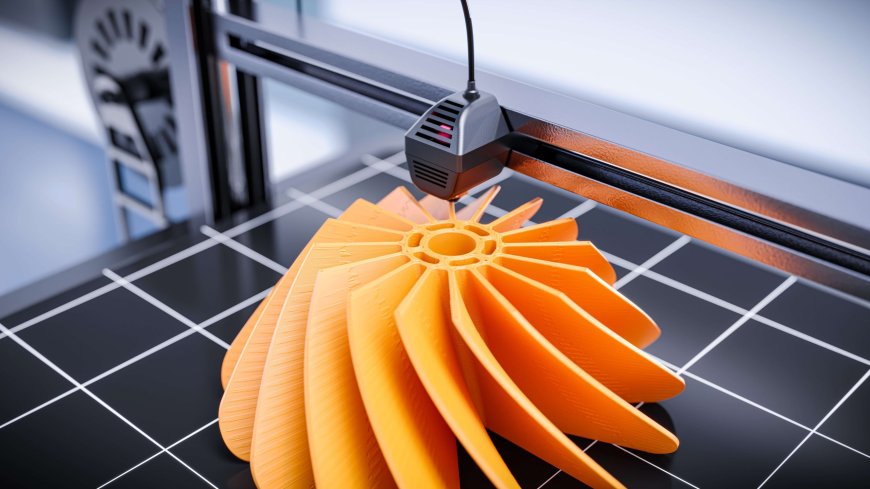The 3D Printing Revolution: Transforming Medicine and Manufacturing
Discover how 3D printing is transforming medicine and manufacturing. From custom prosthetics to on-demand production, explore the technology shaping the future.

Imagine a world where custom prosthetics, human organs, and complex machine parts can be printed on demand. 3D printing is no longer just a futuristic concept—it’s revolutionizing medicine and manufacturing, changing the way we create, customize, and innovate.
From life-saving medical implants to efficient, cost-effective production lines, 3D printing is reshaping industries at an incredible pace. But how exactly is this technology making an impact? Let’s dive into the breakthroughs, benefits, and future possibilities of 3D printing in medicine and manufacturing.
What is 3D Printing?
Also known as additive manufacturing, 3D printing is a process that builds objects layer by layer using digital designs. Unlike traditional manufacturing, which cuts or molds materials, 3D printing adds material precisely where needed, reducing waste and improving efficiency.
The technology can use various materials, including:
???? Plastics – Common for prototyping and consumer products
???? Metals – Used in aerospace, automotive, and industrial applications
???? Biocompatible materials – Essential for medical implants and prosthetics
???? Ceramics and composites – Used for specialized manufacturing and research
How 3D Printing is Transforming Medicine
3D printing is revolutionizing healthcare by providing faster, more personalized, and cost-effective solutions. Here’s how it’s making a difference:
✅ Custom Prosthetics and Implants
Traditional prosthetics are expensive and require weeks or months to produce. 3D printing allows for faster, affordable, and highly customized prosthetics tailored to individual needs.
???? Real-world impact: Organizations like e-NABLE use 3D printing to create low-cost prosthetic hands for children and adults worldwide.
✅ Bioprinting: Printing Human Tissue and Organs
One of the most exciting developments is bioprinting—using living cells to create human tissues and even entire organs.
???? Potential applications:
- 3D-printed skin for burn victims
- Artificial blood vessels to improve transplants
- Future goal: Fully functional 3D-printed organs like kidneys and hearts
????⚕️ Ongoing research: Scientists are working on printing human liver tissue for drug testing and, eventually, full organ transplants.
✅ Personalized Medical Devices
Medical implants, such as hearing aids, dental crowns, and surgical tools, can be custom-made using 3D printing.
???? Why it matters:
- Reduces production costs
- Enhances patient comfort with customized designs
- Shortens delivery time from months to days
✅ 3D-Printed Surgical Models
Before complex surgeries, doctors can print 3D models of a patient’s organs or bones, allowing them to practice procedures beforehand. This leads to higher success rates and fewer complications.
????⚕️ Example: Surgeons at Mayo Clinic use 3D-printed heart models to plan life-saving surgeries for patients with rare conditions.
How 3D Printing is Revolutionizing Manufacturing
Beyond medicine, 3D printing is transforming industrial production, offering new levels of speed, efficiency, and customization. Here’s how:
✅ Rapid Prototyping: Faster, Cheaper, Better
Before 3D printing, creating prototypes was expensive and time-consuming. Now, companies can print prototypes within hours, allowing for faster testing and product development.
???? Example: Automotive companies like Ford and BMW use 3D printing for rapid prototyping of new car parts, reducing development time by weeks or months.
✅ On-Demand Manufacturing
Instead of mass-producing and storing large inventories, companies can now print parts only when needed—saving storage costs and reducing waste.
???? Industries benefiting from on-demand 3D printing:
- Aerospace – Boeing and Airbus use 3D printing for lightweight, durable aircraft components.
- Automotive – Car manufacturers print spare parts, reducing wait times for repairs.
- Electronics – Custom circuit boards and phone cases can be printed instantly.
✅ Sustainable Manufacturing: Less Waste, More Efficiency
Traditional manufacturing often wastes up to 90% of raw materials through cutting and shaping. In contrast, 3D printing uses only the material needed, making it far more sustainable.
???? Eco-friendly benefits:
- Less material waste
- Reduced carbon footprint in production
- Ability to use recycled and biodegradable materials
✅ Customization at Scale
3D printing allows companies to create customized products without slowing down production.
???? Example: Nike and Adidas now use 3D-printed midsoles in their sneakers, providing a personalized fit for customers.
The Future of 3D Printing: What’s Next?
???? Space Exploration: NASA is developing 3D printers for space, allowing astronauts to print tools, parts, and even habitats on Mars or the Moon.
???? Fully Functional Organs: Scientists are working toward bioprinting entire, transplant-ready organs, potentially solving the global organ donor shortage.
???? 3D-Printed Houses: Construction companies are using giant 3D printers to build houses in under 24 hours, providing affordable housing solutions worldwide.
???????? Mainstream Adoption in Factories: As technology advances, 3D printing will become a standard part of manufacturing, replacing traditional methods in many industries.
Final Thoughts: A Technological Revolution in Progress
3D printing is more than just a cool technology—it’s changing lives and industries in ways we never imagined. From custom medical implants to on-demand manufacturing, the possibilities are limitless.
As the technology improves, we can expect even more groundbreaking applications, bringing us closer to a world where anything can be printed on demand—whether it’s a car part, a prosthetic limb, or even a human heart.
The future of 3D printing is here, and it’s only getting started. ????
What's Your Reaction?
 Like
0
Like
0
 Dislike
0
Dislike
0
 Love
0
Love
0
 Funny
0
Funny
0
 Angry
0
Angry
0
 Sad
0
Sad
0
 Wow
0
Wow
0



















































